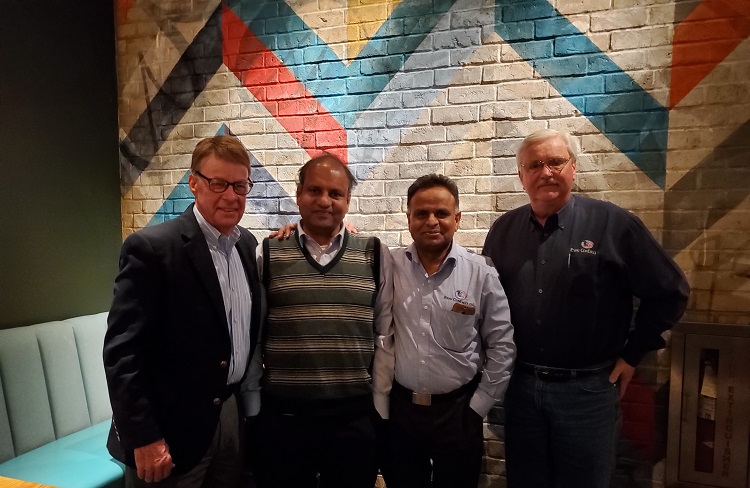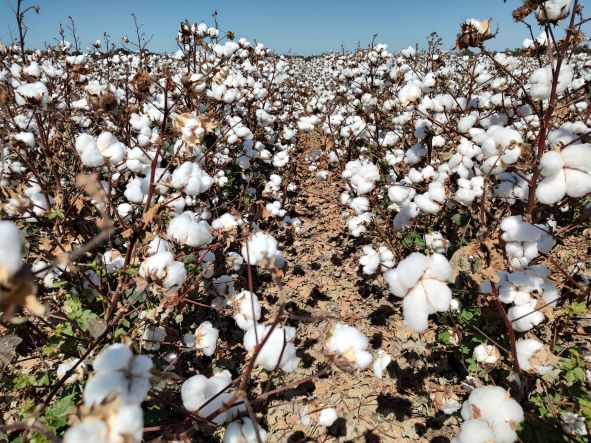Lessons Learned from 100 Years of Ginning Expertise
Technology utilization and enhanced productivity have supported the growth of the cotton ginning industry.
Nearly 100 years of collective experience in the ginning and cotton industry recently gathered for dinner in Lubbock, as ginning industry executives met with me to discuss the growth of the ginning industry over the past 30 years.
Talking ginning at dinner: (from left) Steve Moffett, Dr. Seshadri Ramkumar, Shankar Venkatachalam and Ray Moore.
“Ginning machinery has not seen a whole lot of changes with regard to its functionality,” said Ray Moore of Bajaj ConEagle, LLC – a 31-year veteran with the industry. “Certainly, productivity has increased from 25 bales per hour to 100 bales per hour.”
A key part of the discussion focused on this year’s lower cotton yields across the High Plains of Texas and its impact on the ginning sector. “Yield is about 30% lower than what was expected,” stated, 46-year ginning veteran Steve Moffett, general manager of Lubbock Electric Company.
Another aspect of discussion was how seed turnout and weight have reduced over the years, helping with productivity, pointed out Bajaj ConEagle President Shankar Venkatachalam.
Ginning’s cleaning and drying stages play an important role in enhancing the quality of the fiber. The industry should also effectively utilize technologies such as image processing to control trash and contamination. It’s clear that the ginning industry’s efforts to reduce plastic contamination are showing positive effects.
And, as Bajaj ConEagle is a subsidiary of India-based Bajaj Steel Industry, Ltd., an interesting discussion focused on the Indian ginning sector, which is roller gin based. Venkatachalam noted that India should soon invest in saw gins to help reduce trash content.











